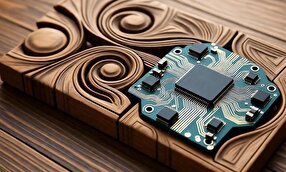Inside Tickling Lab Brain’s Strangest Reflex

Neuroscientist Konstantina Kilteni thinks it can. Her research delves into why we can’t tickle ourselves, why apes and rats respond to tickling, and what makes tickling such a puzzling and unique sensory experience, the journal Science Advances reported.
More than 2,000 years ago, Socrates asked a surprisingly enduring question: What is a tickle, and why are we so sensitive to it? Even Charles Darwin puzzled over it. Yet today, scientists are only beginning to uncover the secrets behind this strangely delightful reflex.
“Tickling is relatively under-researched,” says neuroscientist Konstantina Kilteni. She argues that tickling is a very interesting subject for research. “It is a complex interplay of motor, social, neurological, developmental, and evolutionary aspects. If we know how tickling works at the brain level, it could provide a lot of insight into other topics in neuroscience.
“Tickling can strengthen the bond between parents and children, for instance, and we usually tickle our babies and children. But how does the brain process ticklish stimuli, and what is the relationship with the development of the nervous system? By investigating this, you can learn more about brain development in children.”
Interestingly, research shows that people with autism spectrum disorder tend to perceive touch as more ticklish than those without the condition. Scientists think this heightened sensitivity could reflect key differences in how their brains process sensory information. Exploring this further might open new pathways for understanding autism.
“But we also know that apes such as bonobos and gorillas respond to ticklish touches, and even rats have been observed being so. From an evolutionary perspective, what is the purpose of tickling? What do we get out of it?”
The fact that you cannot tickle yourself is also interesting from a scientific point of view: “Apparently, our brain distinguishes ourselves from others, and because we know when and where we are going to tickle ourselves, the brain can switch off the tickling reflex in advance. But we don’t know what exactly happens in our brain when we are tickled.”
Kilteni argues that these questions have not yet been answered because it has not been clearly defined what tickling actually is within the scientific community – there is a difference between when you tickle someone hard, such as on the armpits, for instance, with your hands, and tickling someone’s back lightly with a feather.
The first sensation is understudied, while we know much more about the second, feather-like stimulation. It is also difficult to compare between existing studies: when someone is tickled by another person, it is difficult to replicate that form of tickling exactly with another test subject.
Kilteni has a tickling lab for this very purpose: it contains a chair with a plate with two holes in it. You put your feet through the holes and then a mechanical stick tickles your footsoles. That way, every tickle experiment is the same. The neuroscientist records exactly what happens in your brain and also immediately checks all other physical reactions, such as heart rate, sweating, breathing, or laughter and screaming reactions.
“By incorporating this method of tickling into a proper experiment, we can take tickling research seriously. Not only will we be able to truly understand tickling, but also our brains.”
4155/v





















